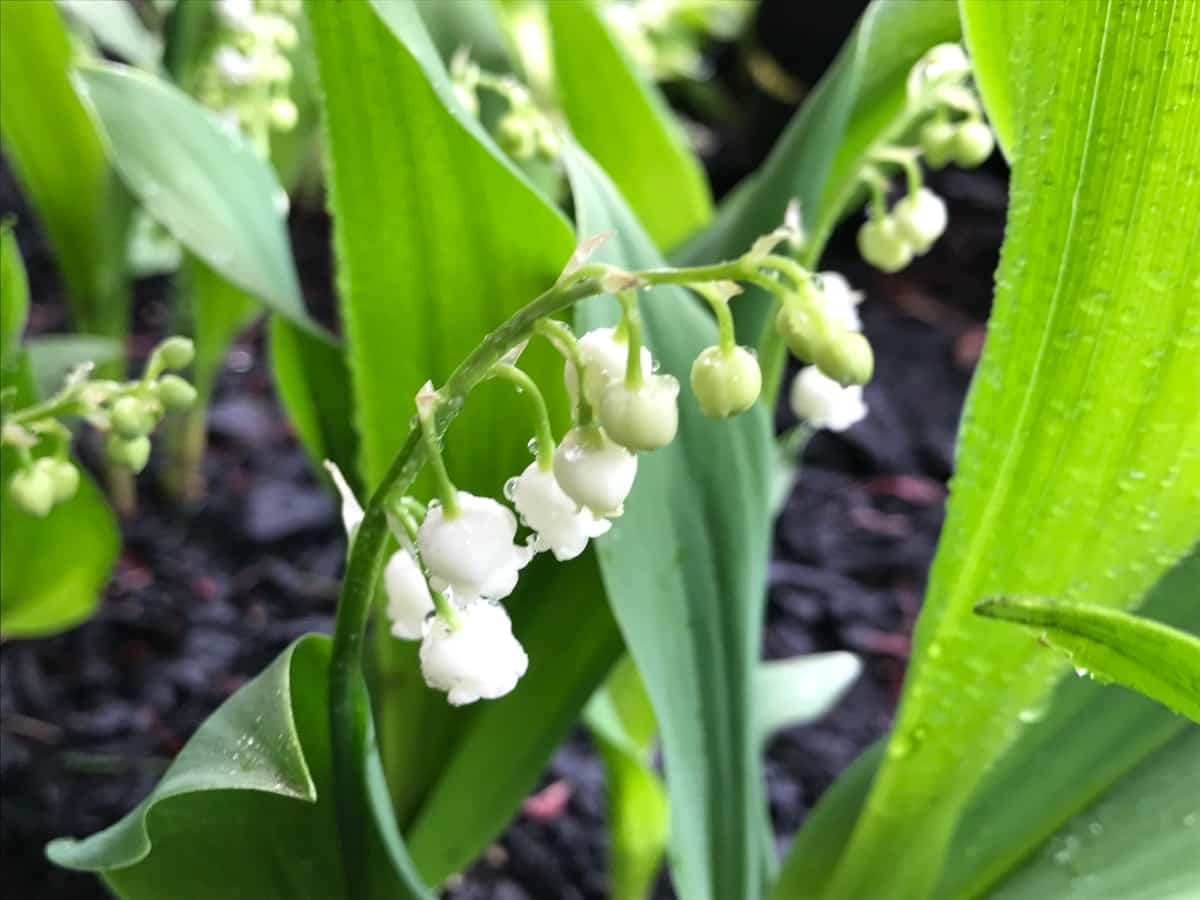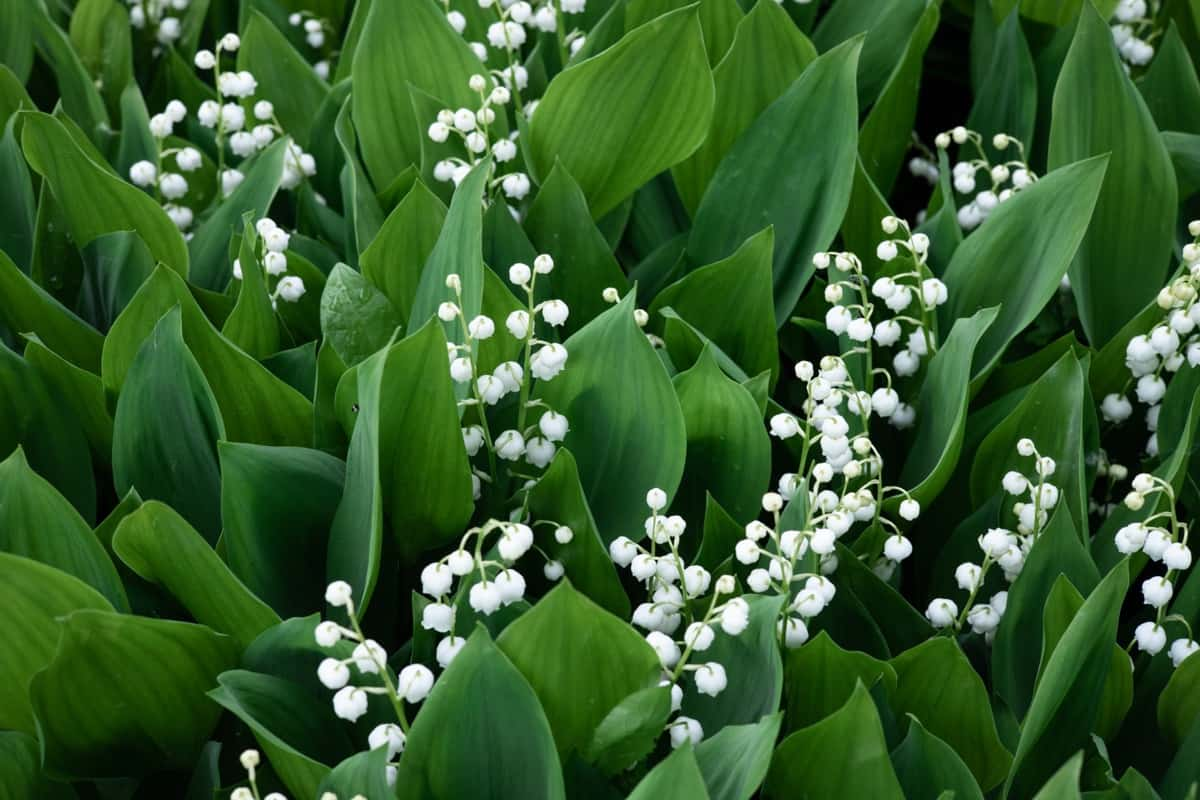Lily of the Valley is a beautiful and fragrant flowering plant that can add charm and elegance to any garden. It is native to Europe and Asia. It grows in temperate regions and prefers shady, moist, and well-drained soil. Lily of the Valley is popular for gardeners because of its low maintenance requirements and beautiful flowers. This article will discuss how to grow and care for Lily of the Valley.

How to Grow and Care for Lily of The Valley
Suitable Location
Lily of the Valley prefers a shady spot with well-drained soil. It can also grow in partial shade but needs sun exposure to bloom. Ensure the soil is not too dry, which can cause the plant to wither. Choose a location sheltered from strong winds, which can damage the delicate stems.
Prepare the Soil
Lily of the Valley prefers soil rich in organic matter and well-drained. To improve its texture and fertility, you can amend the soil with compost, well-rotted manure, or peat moss. The ideal pH for Lily of the Valley is between 6.0 and 7.0.
Planting
When the soil is chilly and damp, such as in the autumn or early spring, planting is at its finest. Dig a hole slightly deeper than the root ball and place the plant in the hole. Space the plants about 6-8 inches apart to allow room for growth. Water the plant well after planting.
Watering
Lily of the Valley needs regular watering, especially during hot and dry weather. Water the plant deeply once or twice a week, depending on the soil moisture. Ensure the soil is moist but not waterlogged, as this can cause root rot.
Fertilizing
Lily of the Valley does not require much fertilizer, but you can apply a balanced fertilizer in the spring to promote healthy growth and blooming. Use a slow-release granular fertilizer high in nitrogen, phosphorus, and potassium. Follow the package instructions for the application rate and method.
Mulching
Spread a layer of mulch around the plant’s foundation; this may be anything from crushed leaves and pine needles to straw. Avoid suffocating the plant with too much mulch.
In case you missed it: How to Start Donkey Farming in 10 Steps: Business Plan, Management, and Care

Pests and Diseases
Lily of the Valley is generally free from major pests and diseases but can be affected by slugs, snails, and fungal infections. You can control slugs and snails by handpicking them or using traps. You can also apply an organic slug and snail bait around the plants. To prevent fungal infections, avoid watering plants from above and provide enough air circulation around the plants.
Propagating
Propagation of lily-of-the-valley is as simple as splitting the rhizomes in the autumn or early spring. Dig up the clumps and separate the rhizomes carefully. Replant the rhizomes in a new location, or share them with friends and neighbors. You can also propagate Lily of the Valley by planting the pips (bulblets) that form on the stem. Wait until the pips are mature and firm, then plant them in well-prepared soil.
Pruning
Lily of the Valley does not require much pruning, but you can remove dead or yellowing leaves and flowers to keep the plant neat and tidy. Cut the stems close to the ground after the flowers have faded, but be careful not to damage the new growth. You can also trim any overgrown or straggly stems to encourage bushier growth.
Winter Care
Although lily-of-the-valley plants can survive freezing conditions, they are susceptible to frost heave and soil compaction when exposed to too much water. Mulch the plants with straw or evergreen branches in the autumn to protect them from frost heave. With this, the roots will be protected from the cold and won’t perish. If you must be near the plants, please don’t step on the soil since this might harm the plant’s roots and compress the soil.
In case you missed it: Frequently Asked Questions About Vegetable Farming: Vegetable Gardening, Planting, and Care

Conclusion
In conclusion, growing and caring for Lily of the Valley is relatively easy and requires minimal effort. By following these simple tips, you can enjoy the beauty and fragrance of this charming plant in your garden for years to come. With a bit of care and attention, your Lily of the Valley will reward you with its delicate blooms and sweet scent.
- Feed Your Flock for Less: Top 10 Tips to Save on Chicken Feed
- Ultimate Guide to Ossabaw Island Hog: Breeding, Raising, Diet, and Care
- Hatching Answers: The Top 10 Reasons Your Chickens Aren’t Laying Eggs
- Eggs and Economics: Breaking Down the Cost of Raising Backyard Chickens
- Defend Your Greens: Proven Methods to Keep Iguanas Out of Your Garden
- Ultimate Guide to Cinnamon Queen Chicken: A Comprehensive Guide for Beginners
- Ultimate Guide to California Tan Chicken: Breeding, Raising, Diet, Egg-Production and Care
- Ultimate Guide to Marsh Daisy Chicken: Breeding, Raising, Diet, and Care
- 10 Types of Chicken Farming Businesses You Can Start for Profits